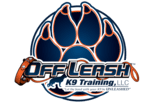10 Warning Signs To Ensure You Are Not Getting A Dog From A Puppy Mill!
Nowadays it has become more important than ever to adopt a pet instead of buying it. Thousands of helpless animals are put to death every year because they are ownerless. If you have your heart set on a puppy of your own there is no reason not to call around shelters and find some puppies…
